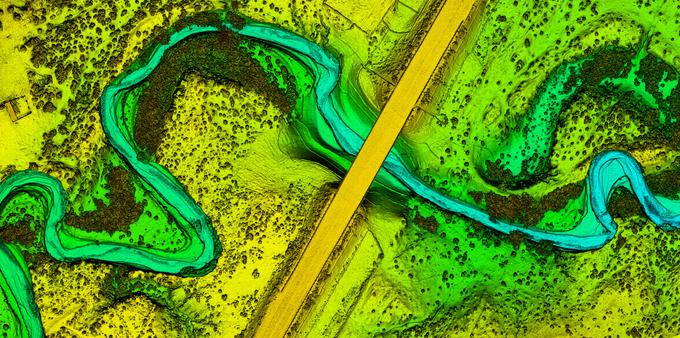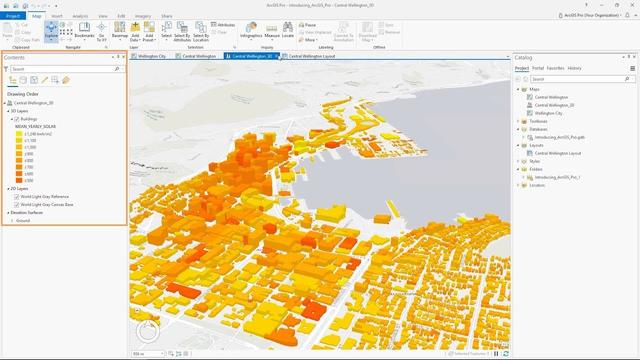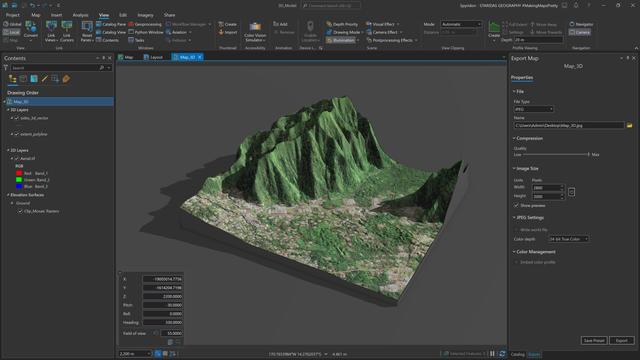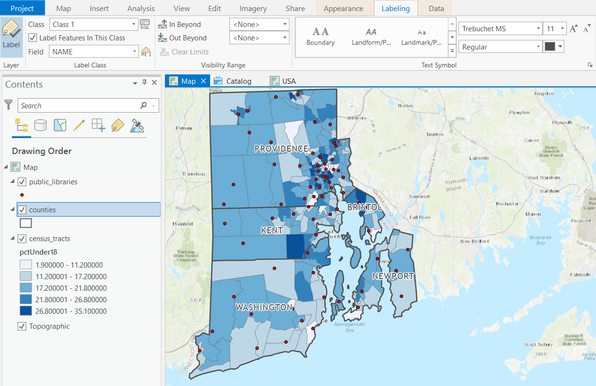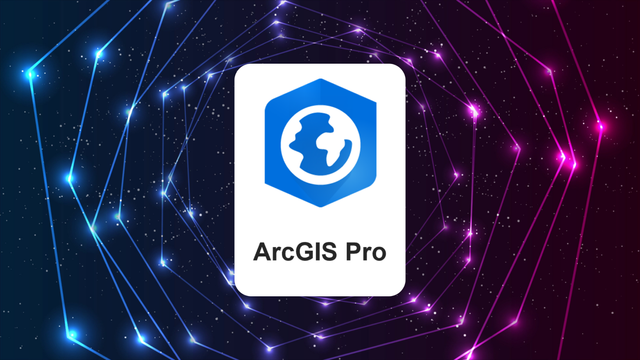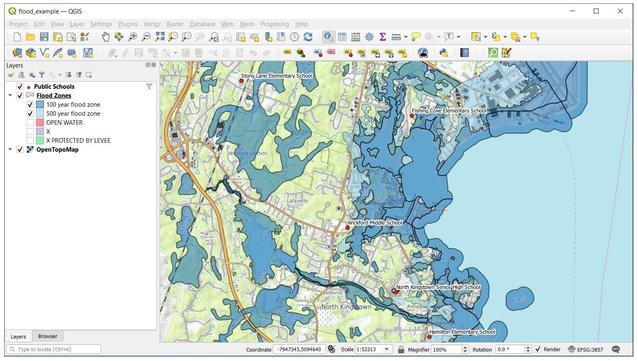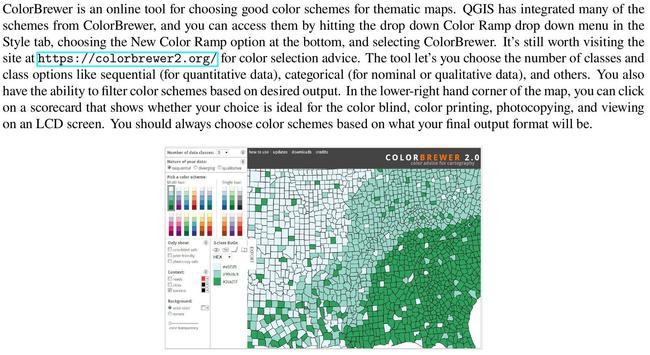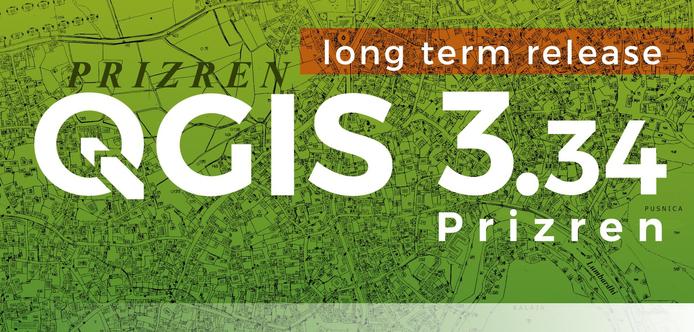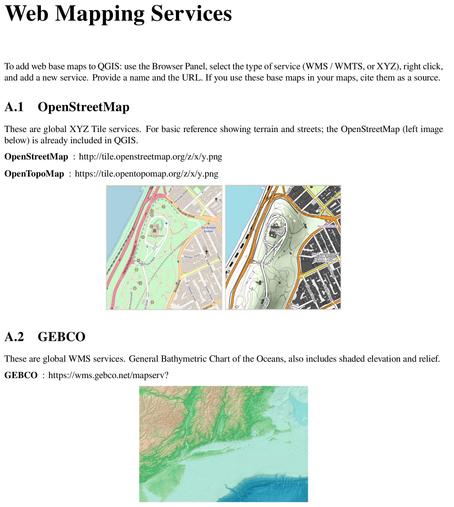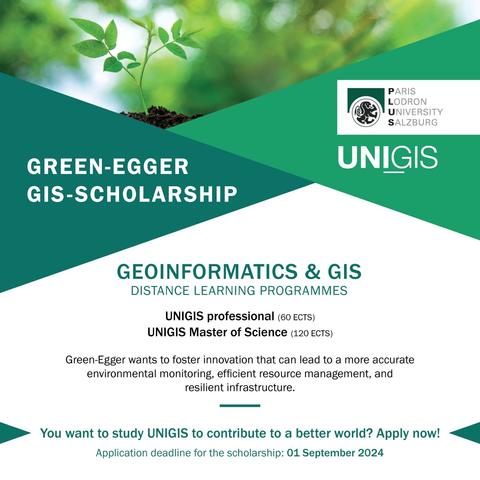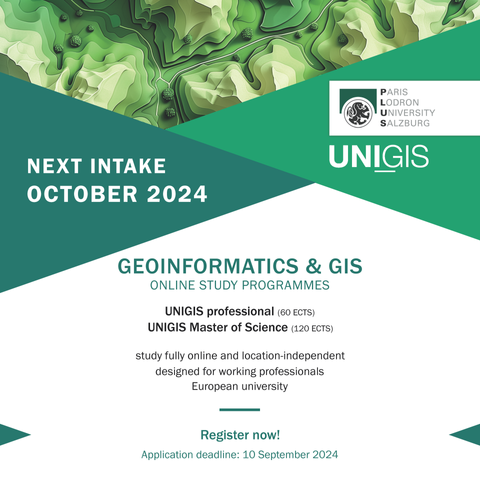Our new article "Where it Seems Impossible: School Education in the Occupied and Frontline Territories of Ukraine"
We share the first shocking restart of learning after the 2022 invasion.
📖 https://doi.org/10.1002/rev3.70062
#DistanceLearning
These courses look amazing.
Distance learning too!
https://archaeologyorkney.com/study/online-options/
#DistanceLearning #Archaeology #University #Orkney #Scotland
University of the Highlands and Islands - https://www.uhi.ac.uk/en/
Introduction To Remote Sensing And Geographical Information Systems [GIS]
--
https://www.nateko.lu.se/sites/nateko.lu.se.sv/files/remote_sensing_and_gis_20111212.pdf <-- shared link to paper/publication
--
[I have yet to dig into this myself, but it looks very promising]
#GIS #spatial #mapping #remotesensing #earthobservation #learning #onlinelearning #tutorial #education #learning #elearning #onlineclasses #distancelearning #school #virtuallearning #learn #edtech #digitallearning #students #remotelearning #student #onlinetraining #training #technology #spatialdata #spatialanalysis #spatiotemporal #concepts #satellite #imagery #aerialimagery #raster #vector #introduction #101
My university applications were successful! I have two offers and am deciding between them. UNE is excellent for online learning, while Deakin is great with accessibility and based in Melbourne. Both programs are similar, though Deakin has more electives, while UNE’s writing major is broader. At Deakin, I could specialise in professional writing, which is my main interest. Decisions, decisions! #Writing #Postgrad #HigherEd #DistanceLearning #WritingStudies
»Halt mal die Schnauze und lasst uns das klären!« – zur Entgrenzung religiöser #Bildung angesichts der #Corona-Epidemie: Matthias Gronover berichtet von seinem letzten #Religionsuntericht vor #Shutdown und #DistanceLearning https://bit.ly/2wtFXnQ #CoronaVirus #Coronakrise
„Halt mal die Schnauze und las...
Intro to ArcGIS Pro - [Brown University] S4 GIS Institute [tutorial]
--
https://libguides.brown.edu/gis_data_tutorials/s4arcpro <-- shared tutorial/self-lead class
--
[images are for attention ~smile~]
“The tutorials on this page were written for S4's GIS Institute. They are short, introductory tutorials for learning ArcGIS Pro, listed in the order in which they were presented….”
#GIS #spatial #mapping #ArcGIS #ArcGISPro #tutorial #desktop #selflearning #selftaught #onlinelearning #education #learning #elearning #onlineclasses #distancelearning #onlinecourses #onlineeducation #online #school #virtuallearning #learn #usecase #free #gischat
Introduction to GIS with QGIS [tutorial]
--
https://libguides.brown.edu/gis_data_tutorials/intro_qgis <-- shared Brown University tutorial/self-lead class
--
"This tutorial was created for a day-long introductory GIS workshop and for self-directed learners, using the free and open source QGIS desktop software. Download QGIS and install it for Windows, Mac, or Linux. It's recommended that you install the same version of QGIS that's being used in the tutorial, which is written for the stable long term release…”
#GIS #spatial #mapping #QGIS #opensource #opendata #tutorial #desktop #geopackage #selflearning #selftaught #onlinelearning #education #learning #elearning #onlineclasses #distancelearning #onlinecourses #onlineeducation #online #school #virtuallearning #learn #usecase #free
Empowering Education Anytime, Anywhere!
Looking to reach learners without boundaries? Acadecraft’s distance eLearning solutions bring high-quality, interactive, and accessible education to students no matter where they are. With our customized eLearning tools, we make remote learning as engaging and effective as in-person classes.
Learn more: https://www.acadecraft.com/learning-solutions/distance-elearning-solutions/
#eLearning #DistanceLearning #EducationTech #RemoteLearning #Acadecraft #OnlineLearningSolutions
Embrace the future of learning with Acadecraft’s Distance eLearning Solutions! Our services are designed to make remote learning engaging, interactive, and accessible for learners everywhere. Discover how we’re helping organizations create impactful online learning experiences that go beyond boundaries. 📚✨
Explore our solutions here: https://www.acadecraft.com/learning-solutions/distance-elearning-solutions/
#distancelearning #elearningsolutions #remoteeducation #onlinelearning #acadecraft
⭕️ഇഗ്നോ ജൂലായ് സെഷന് രജിസ്ട്രേഷന് സെപ്റ്റംബര് 30 വരെ നീട്ടി
Read full story: https://nivadaily.com/ignou-extends-july-session-registration-deadline-september-30/
Join our Whatsapp group
https://chat.whatsapp.com/CktzgxHMaoo84IZtsOqEe6
𝗥𝗘𝗠𝗜𝗡𝗗𝗘𝗥 💡 Hand in your application for the scholarship until 01 September 2024! 📥
https://unigis.at/en/scholarships/
#masterofscience #unigis #distancelearning #scholarship #masteringeoinformatics #geoinformatics #gis
Study of parents' impressions of virtual learning emphasize how MUCH work good effective teaching is. https://phys.org/news/2024-08-parent-perceptions-virtual.html #education #distancelearning #remotelearning
📣 Boost Your #GIScareer with #unigis 🚀
Starting October 1st, 2024, the 𝗨𝗡𝗜𝗚𝗜𝗦 𝗠𝗮𝘀𝘁𝗲𝗿 𝗼𝗳 𝗦𝗰𝗶𝗲𝗻𝗰𝗲 and 𝗨𝗡𝗜𝗚𝗜𝗦 𝗽𝗿𝗼𝗳𝗲𝘀𝘀𝗶𝗼𝗻𝗮𝗹 programmes offer you the chance to gain #Geoinformatics skills through our location-independent #onlinecourses . Ideal for working professionals looking to expand their expertise and advance in their careers, our programmes provide the skills and knowledge needed to become a #GISexpert.
🔎 More: www.unigis.at/en
#DistanceLearning #onlinestudies #onlinemaster #giseducation
🌞 The social media summer break is over and we're excited to share our July highlights with you: 𝟯𝟬 𝗬𝗲𝗮𝗿 𝗔𝗻𝗻𝗶𝘃𝗲𝗿𝘀𝗮𝗿𝘆 𝗼𝗳 𝗨𝗡𝗜𝗚𝗜𝗦 𝗦𝗮𝗹𝘇𝗯𝘂𝗿𝗴 🎉🥂
@unigis_salzburg was celebrating 30 years of #EducatingGISprofessionalsWorldwide with a special event, in July 2024. We are looking forward to another 30 years of #Geoinformatics #distancelearning! 🚀
Read more in the PLUS news: https://lnkd.in/dWazHuRF
#UNIGIS #MasterofScience #Celebration #Teamwork #GIS
Teamphoto credit: S. Haigermoser
"we have seen a significant increase in the number of online degrees this year. Since the start of the year, more than 65 new online degrees have been launched. While these are primarily postgraduate master's degrees, there is a not insignificant amount of undergraduate degrees too." https://buff.ly/3Xz5Dd0
#onlinelearning #onlineeducation #distancelearning #distanceeducation #elearning #highereducation #highered #universities
"Online education has an excellent pedigree as a format that supports learning while you earn, and..there’s a role for online education in disrupting the dichotomy that has sometimes been presented as either going to university or doing an apprenticeship." https://buff.ly/3LdzFM6 #onlinelearning #onlineeducation #distancelearning #distanceeducation #elearning #highereducation #highered #universities
"The last six months have seen a continued increase in the number of UK HEIs seeking to seriously enter the online distance education market. While there are various paths to take, it is clear that many UK HEIs are continuing to form partnerships with OPMs and other online education companies." https://buff.ly/3zjO8TJ #onlinelearning #onlineeducation #distancelearning #distanceeducation #elearning #highereducation #highered #universities
I had the great pleasure of being invited to the Open University of the Netherlands and, later in the day, to EdLab, Maastricht University a few weeks ago, giving a slightly different talk in each place based on some of the main themes in my most recent book, How Education Works. Although I adapted my slides a little for each audience, with different titles and a few different slides adjusted to the contexts, I could probably have used either presentation interchangeably. In fact, I could as easily have used the slides from my SITE keynote on which both were quite closely based (which is why I am not sharing them here). As well as most of the same slides, I used some of the same words, many of the same examples, and several of the same anecdotes. For the most part, this was essentially the same presentation given twice. Except, of course, it really, really wasn’t. In fact, the two events could barely have been more different, and what everyone (including me) learned was significantly different in each session.
This is highly self-referential. One of the big points of the book is that it only ever makes sense to consider the entire orchestration, including the roles that learners play in making sense of it all the many components of the assembly, designed for the purpose and otherwise. The slides, structure, and content did provide the theme and a certain amount of hardness, but what we (collectively) did with them led to two very different learning experiences. They shared some components and purposes, just as a car, a truck, and a bicycle share some of the same components and purposes, but the assemblies and orchestrations were quite different, leading to very different outcomes. Some of the variation was planned in advance, including an hour of conversation at the end of each presentation and a structure that encouraged dialogue at various points along the way: these were as much workshops as presentations. However, much of the variance occurred not due to any planning but because of the locations themselves. One of the rooms was a well-appointed conventional lecture theatre, the other an airy space with grouped tables, and with huge windows looking out on a busy and attractive campus. In the lecture theatre I essentially gave a lecture: the interactive parts were very much staged, and I had to devise ways to make them work. In the airy room, I had a conversation and had to devise ways to maintain some structure to the process, that was delightfully disrupted by the occasional passing road train and the very tangible lives of others going on outside, as well as an innately more intimate and conversational atmosphere enabled (not entailed) by the layout. Other parts of the context mattered too: the time of day, the temperature, the different needs and interests of the audience, the fact that one occurred in the midst of planning for a major annual event, and so on. All of this had a big effect on how I and others behaved, and on what and how people learned. From one perspective, in both talks, I was sculpting the available affordances and constraints to achieve my intended ends but, from another equally valid point of view, I was being sculpted by them. The creators and maintainers of the rooms and I were teaching partners, coparticipants in the learning process. Pedagogically, and despite the various things I did to assemble the missing parts in each, they were significantly different learning technologies.
The complexity of distance teaching
Train journeys are great contexts for uninterrupted reflection (trains teach too) so, sitting on the train on my journey back the next day, I began to reflect on what all of this means for my usual teaching practice, and made some notes on which this post is based (notebooks teach, too). I am a distance educator by trade and, as a rule, with exceptions for work-based learning, practicums, co-ops, placements, and a few other limited contexts, distance educators rarely even acknowledge that students occupy a physical space, let alone do we adapt to it. We might sometimes encourage students to use things in their environments as part of a learning activity, but we rarely change our teaching on the fly as a result of the differences between those environments. As I have previously observed, the problem is exacerbated by the illusion that online systems are environments (in the sense of being providers of the context in which we learn) and that we believe we can observe what happens in them. They are not, and we cannot. They are parts of the learners’ own environments, and all we can (ethically) observe are interactions with our designed systems, not the behaviour of the learners within the spaces that they occupy. It is as hard for students to understand our context as it is for us to understand theirs, and that matters too. It makes it trickier to model ways of thinking and approaches to problem solving, for example, if the teacher occupies a different context.
This matters little for some of the harder elements of the teaching process. Information provision, resource design, planning, and at least some forms of assessment and feedback are at least as easy to do at a distance as not. We can certainly do those and make a point of doing them well, thereby providing a little counterbalance. However, facilitation, role modelling, guidance, supporting motivation, fostering networks, monitoring of learning, responsive adaptation, and many other significant teaching roles are more complex to perform because of how little is known about learning activities within an environment. As Peter Goodyear has put it, matter matters. The more that the designated teacher can understand that, the more effective they can be in helping learners to succeed.
Because we are not so able to adapt our teaching to the context, distance learning (more accurately, distance teaching) mostly works because students are the most important teachers, and the pedagogies they add to the raw materials we provide do most of the heavy lifting. Given some shared resources and guided interactions, they are the ones who perform most of the kinds of orchestration and assembly that I added to my two talks in the Netherlands; they are the ones who both adapt and adapt to their spaces for learning. Those better able to do this in the first place tend to do better in the long run, regardless of subject interest or innate ability. This is reflected in the results. In my faculty and on average, more than 95% of our graduate students – who have already proven themselves to be successful learners and so are better able to teach themselves – succeed on any given course, in the sense of reaching the end and achieving a passing grade. 70% of our undergraduates, on the other hand, are the first in their family to take a degree. Many have taken years or even decades out of formal education, and many had poor experiences in school. On average, therefore, they typically have fewer skills in teaching themselves in an academic context (which is a big thing to learn about in and of itself) and we are not able to adapt our teaching to what we cannot perceive, so we are of little assistance either. Without the shared physical context, we can only guess and anticipate when and where they might be learning, and we seldom have the faintest idea how it occurs, save through sparse digital signals that they leave in discussion forums or submitted assignments, or coarse statistics based on web page views. In a few undergraduate core courses within my faculty it is therefore no surprise that the success rates are less than 30%, and (on average) only about half of all our students are successful, with rates that improve dramatically in more senior level courses. The vast majority of those who get to the end pass. Most who don’t succeed drop out. It doesn’t take many core courses with success rates of 30% to eliminate nearly 95% of students by the end of a program.
Teaching with a context
We can better deal with this if we let go of the illusion that we can be in control and, at the same time, find better ways to stay close: to make the learning process including the environment in which it occurs, as visible as possible. It is emphatically not about capturing digital traces and using analytics to reveal patterns. Though such techniques can have a place in helping to build a picture of how learners are responding to our deliberate acts of teaching, they are not even close to a solution for understanding learners in context. Most learning analytics and adaptive systems are McNamara Machines, blind to most of what matters. There’s a huge risk that we start by measuring the easily measurable then wind up not just ignoring but implicitly denying that the things we cannot measure are important. Yes, it might help us to help students who are going to get to the end anyway to get better grades, but it tells us very little about (for instance) how they are learning, what obstacles they face, or how we could help them orchestrate their learning in the contexts in which they live. Could generative AI help with that? I think it might. In conversation, an AI agent could ask leading questions, could recommend things to do with the space, could aggregate and report back on how and where students seem to be learning. Unlike traditional adaptive systems, generative AI can play an active discovery role and make broader connections that have not been scripted. However, this is not and should not be a substitute for an actual teacher: rather, it should mediate between humans, amplifying and feeding back, not guiding or informing.
For the most part, though, I think the trick is to use pedagogical designs that are made to support flexibility, that encourage learners to connect with the spaces live and people they share them with, that support them in understanding the impact of the environments they are in, and, as much as possible, to incorporate conduits that make it likely that participants will share information about their contexts and what they are doing in them, such as through reflective learning diaries, shared videos or audio, or introductory discussions intended to elicit that information. A good trick that I’ve used in the past, for example, is to ask students to send virtual postcards showing where they are and what they have been doing (nowadays a microblog post might serve a similar role). Similarly, it can be useful to start discussions that seek ideas about how to configure time and space for learning, sharing problems and solutions from the students themselves. Modelling behaviours can help: in my own communications, I try to reveal things about where I am and what I have been doing that provide some context and background story, especially when it relates to how I am changing as a result of our shared endeavours. Building social interaction opportunities into every inhabited virtual space would help a lot, making it more likely that students will share more of what they are doing and increasing awareness of both the presence and the non-presence (the difference in context) of others. Learning management systems are almost universally utter rubbish for that, typically relegating interactions to controlled areas of course sites and encouraging instrumental and ephemeral discussions that largely ignore context. We need more, more pervasively, and we need better.
None of this will replicate the rich, shared environments of in-person learning, and that is not the point. This is about acknowledging the differences in online and distance learning and building different orchestrations around them. On the whole, the independence of distance students is an extremely good thing, with great motivational benefits, not to mention convenience, much lower environmental harm, exploitable diversity, and many other valuable features that are hard to reproduce in person. When it works, it works very well. We just need to make it work better for those for whom that is not enough. To do that, we need to understand the whole assembly, not just the pieces we provide.
https://jondron.ca/on-the-importance-of-place/
#analytics #architecture #context #distanceEducation #distanceLearning #environment #learningToLearn #lecture #lms #motivation #onlineEducation #onlineLearning #orchestration #place #technology #visibleLearning
"through the vast ecosystem of platforms, there exists a substantial number of online short courses and participants. This does not imply that HEIs can easily tap into this market, but it underscores a persistent demand for short online courses." https://buff.ly/3Wytrgn #onlinelearning #onlineeducation #distancelearning #distanceeducation #elearning #highereducation #highered #universities
In June, our colleague Judith from the UNIGIS Faculty Salzburg team visited Kenia. In Nairobi, she met with UNIGIS student Gareth who works far west of the city as a #GIAnalyst in the sugar cane industry .
…a truly worldwide community! 😉
#UNIGIS #student #geoinformatics #gis #studyremotly #distancelearning #africa #visits
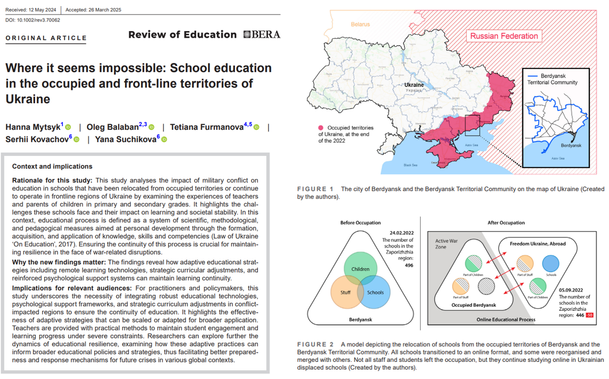
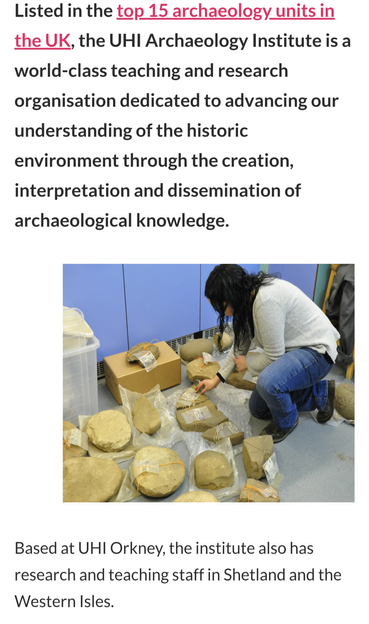
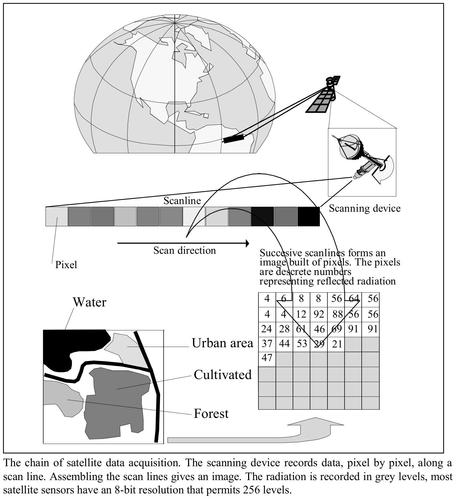
![cover - paper/publication - Introduction To Remote Sensing And Geographical Information Systems [GIS]](https://files.mastodon.social/cache/media_attachments/files/114/027/993/324/298/852/small/ab47336fc057b040.jpg)

